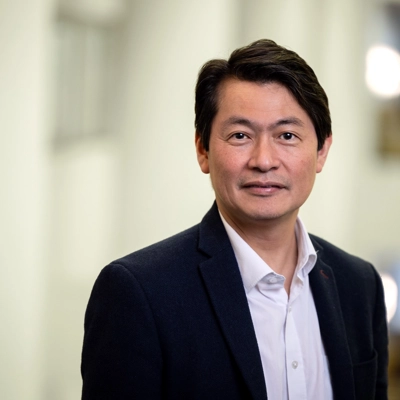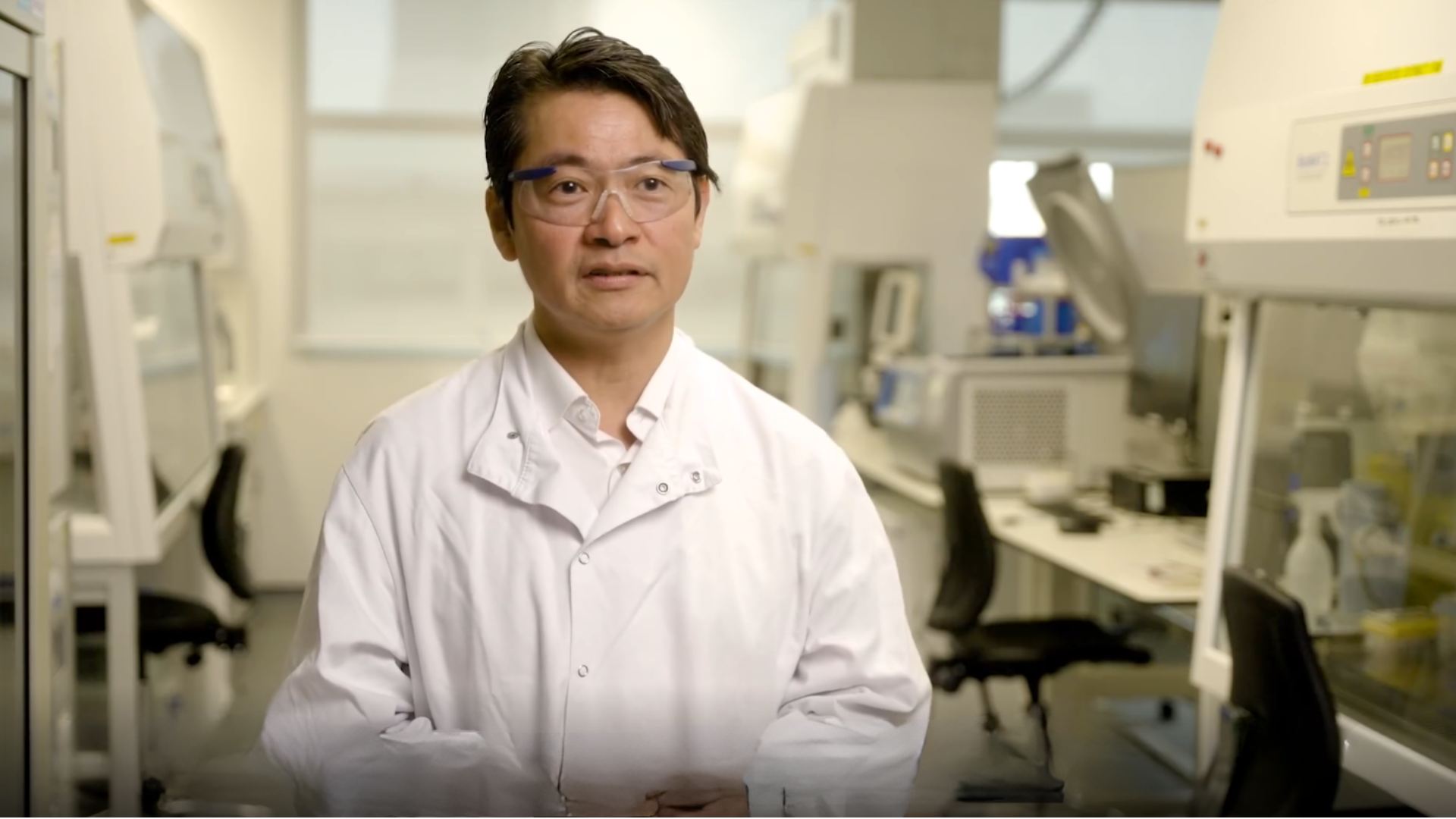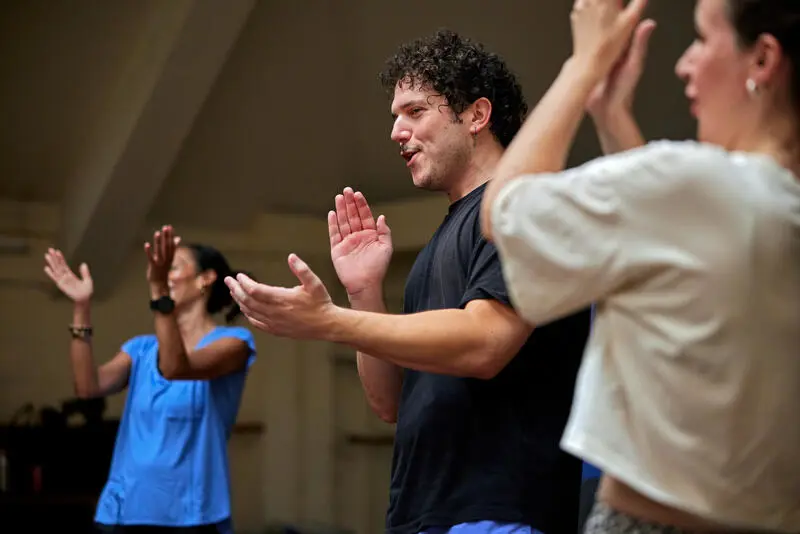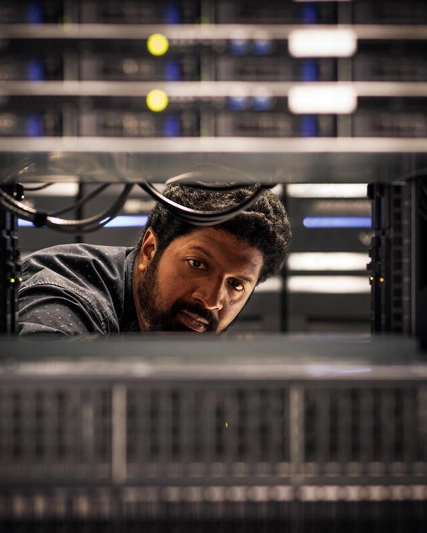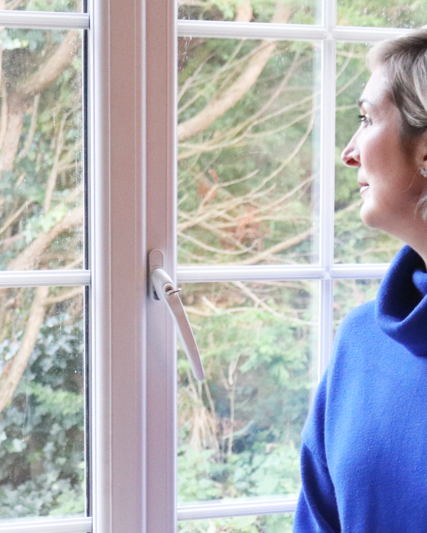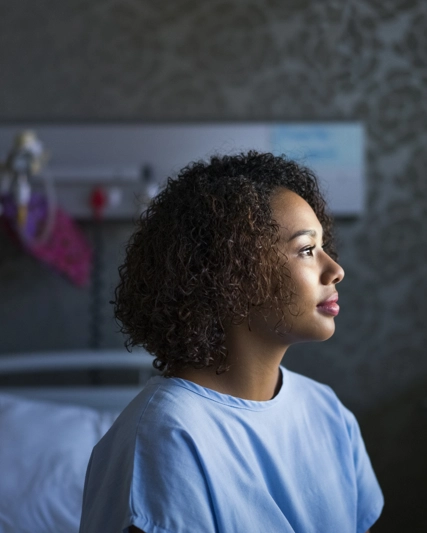The future is here – and scientists at GSK are already using digital biological twins and organoids to create personalised solutions for patients with cancer. Here, Professor Tony Ng, who runs GSK’s Translational Oncology Research Hub, explains how they work – and the first of its kind trial his team are running to map out detailed replicas of lung cancer tumours for 200 NHS patients.
I started my career in the 1990s as a doctor at the peak of the AIDS crisis, treating scores of patients with secondary infections and tumours, such as Hodgkin’s lymphoma and Kaposi sarcoma – a rare type of cancer caused by a virus.
I worked in San Francisco General, where the level of patient care was excellent. Healthcare professionals worked without stigma or prejudice. I was struck not only by how relentless residents were in the efforts to help patients, despite often being up all night, but also by how different the effects of oncology therapies were from one patient to the next.
It sparked my curiosity about the mechanisms that underpin disease progression. As my experience in oncology grew, I began to understand how cancer cells respond to treatment, how a person’s body responds to treatment, and just how much those responses vary from person to person.For decades, oncologists have confronted this challenge by relying on population-level data. While helpful, scientists using this method can miss critical nuances of individual tumour biology, because the data doesn’t include how cancer manifests differently in different people. I wanted a solution that would help us match the right patients with the right treatment, improving survival rates and reducing any side effects they might experience.
So, my team and I took advantage of the boom in advanced technology to develop digital twin simulations of tumours and organoids – miniature living replicas of a patient’s tumour grown in a lab using sample cells extracted from surgically removed cancers. While patients may only be able to take part in one drug trial at a time, organoids derived from patients can stand in for them and be used to test many treatments and other variables.
Significant impact
Digital biological twins – virtual representations of biological systems or processes – have given researchers and clinicians the potential to tailor personalised therapies across a range of tumour types by virtually testing how they would work on digital replicas of tumours.
To construct digital biological twins, we cultivate a vast array of organoids. These 3D structures, which are about the size of a lentil, mimic the unique characteristics of each patient's specific cancer. They are sequenced, measured and analysed so researchers can observe and understand the complex tumour microenvironment.
The digital twin is a mosaic of information about a patient’s disease gathered from the organoid itself, as well as genetic data, tumour cell images, and diagnostics from CT and MRI scans. Using Artificial Intelligence and machine learning to identify clues and patterns in the data, they can help us work out which patients would be most likely to benefit from certain therapies, why some patients experience side effects, and what the optimal doses for them are.
I wanted to scale this project to make the maximum impact for patients, so in 2021 I joined GSK to run the Translational Oncology Research Hub. Along with me came a collaboration with King’s College London (KCL), where I continue to work as the Richard Dimbleby Professor of Cancer Research.
Today, in the first clinical trial of its kind to combine organoids, AI and imaging as components of digital biological twins, we are growing organoids taken from the tumours of 200 NHS patients who have undergone surgery for non-small cell lung cancer and consented to take part in the research. We decided to focus on lung cancer ast for around half of those whose tumour had been “advanced but operable,” the disease will return within a few years.
By analysing the samples we grow, we can create biologically detailed, data-rich representations of individual patients' cancers. Working with Guy’s and St. Thomas’s Hospital and KCL, we want to test this approach and evaluate how pairing the data we gather with AI and machine learning could potentially help us more accurately predict which patients will relapse, and which combinations of treatments will be most effective when they do.
We are also broadening this partnership to create a global network of clinical academic centres to expand this type of work in oncology more generally. For example, in 2024 we acquired CELLphenomics, a leader in patient-derived organoids, to access the company’s world class organoid platform.
In a separate global study of patients with a biomarker-specific colon cancer, we’re using digital biological twins with organoid tumour modelling, AI, machine learning and more to predict treatment responses and increase our understanding of how biomarker-targeted treatments work. Biomarkers are characteristics of the body or disease that can be measured to provide information about a patient’s biological condition or specific disease. We’re hoping this new information will help us accelerate our development of more effective treatments for patients.
Looking ahead
I see a massive opportunity and mandate: getting ahead of cancer by leveraging predictive technology for prevention and tailored treatment strategies.
This approach has transformative potential to improve outcomes and realise a future where disease is managed with unprecedented precision. And it’s already making a huge impact in what we now know and understand about cancer.
